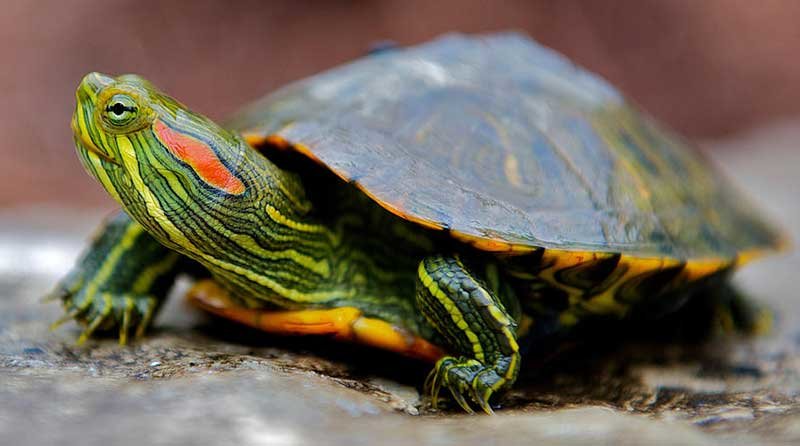Iran’s reckless disregard in the face of invasive species

Introduced species, species living outside its native distributional range arrived there by human activity, either deliberate or accidental, are responsible for about 40% of historic extinctions. Most of these data come from mammals and birds for which there is more information.
Invasive species are those which spread and increase in abundance rapidly and sometimes at the expense of native species. For example red-eared sliders found in most of natural habitats of Iran are considered as an invasive species as they outcompete native turtle species for resources such as nutrients, light, physical space, water, or food. It should be noted that red-eared sliders are also included in the list of the world's 100 most invasive species by the International Union for Conservation of Nature and Natural Resources (IUCN). Invasive species such as red eared sliders may displace native species through competition for limiting resources.
Invasive species throwing ecosystem out of balance

Not unlike other countries Iran has suffered a lot by invasive species. Azolla was an unwelcomed guest spread in Anzali wetland and is now one of the most serious conservation risks in our country.
Unfortunately as global trade increases, many inadvertent or deliberate introductions are being made with little regard for their conservation consequences. Azolla entered Iran in the hope of delivering improvement in the quality of paddy fields. Azolla, a floating fern, originates from Cambodia which is located in southern portion of the Indochina Peninsula in Southeast Asia. The seemingly safe Azolla had a chance of getting out of rice fields by a simple accident and entering to natural habitats due to lack of control over it. Till now the problem persists in many natural habitats of Iran.
Another bitter experience again happened in Hamoun. Hamoun is another set of very large and extraordinary wetland in Iran, which is exceptionally important to local people and biodiversity. These very shallow wetlands, at the bottom of the Helmand river basin that is shared with Afghanistan, are very vulnerable to changes in the water flows from upstream. They are also, naturally, periodically dry wetlands – and that periodicity is crucial to their rich productivity. Silver and also common carps were recorded in the past years but the introduction of Amur fish (grass carp) from China suddenly disrupts the whole ecosystem. The grass carp (Ctenopharyngodon idella) is the species of fish with the largest reported production in aquaculture globally, over five million tons per year. It is also considered as a large herbivorous fresh water fish species. Grass carps have burly mouth and jaws, this feature came as a great weapon against bulrushes and the whole ecosystem. The people of this region were dependent on mat weave, diaries and also birds who came to natural wetlands of Hamoun. All of these disappeared not just because of drought but also because of human intervention and introducing an invasive species.
No one doubts the adverse impacts of introduced species. A simple example is the fate of Nile perch. The Nile perch was introduced into Lake Victoria in the early 1980s and caused the extinction of over 200 endemic species of cichlid fish between 1984 and 1997. The fate of grass carp in Hamoun was not far expected as the fate of other invasive species such as common water hyacinth, red-eared sliders, raccoons, rhesus macaque and many unknown species is clear. But why we ignore it?

Invasive species power
In fact the great majority of exotics do not become established in the places in which they are introduced, because the new environments are not suitable to their needs or because they have not arrived in sufficient numbers. However, a certain percentage of species do establish themselves in their new homes, and many of these as mentioned before, considered invasive species because they spread and increase in abundance rapidly and sometimes at the expense of native species.
The empirical knowledge showed that any kind of living organism from plant, insect, fish or even mammal that is not native in an ecosystem could be invasive if it causes harm to others. But why some certain exotic species are able to invade new habitats and some not?
Our ignorance
The main reason is absence of their natural predators and parasites that in their own habitat would control their population growth e.g. Persian squirrels (*****Sciurus anomalus*******) are trafficking from Zagros Mountains to Tehran and Alborz province; the unconscious release of squirrels caused many damages to gardeners especially in Mehrshahr and Kordan region. All of these happen because there is no suitable natural predator in the new habitat. On the other hand exotic species sometimes may be better suited to taking advantage of disrupted conditions than native species.
Trafficking of rhesus macaque to Iran is another big challenge. Global invasive species database named rhesus macaque as an invasive species in some countries because of great adaptability, allowing it to make the most of changes in land use and high frequency for carrying and transmitting the Herpes B virus. Some of them considered exotic in southwestern of Japan but in general the natural range of them is in Afghanistan, northern and central India, northern and central Indochina, central and southern continental China, and Hainan Island. Some concerns exist about unconscious release of rhesus macaques in Iran too.
We all know human activity causes disturbances that may create unusual environmental conditions. The challenge of invasive species in Iran is obvious and there is absolutely no doubt about it. Emotional encounter is not a solution, then all the executive organizations and also public must be sensitive and also responsible about it.
